Alfa Romeo Junior vs Nissan Ariya – Which car suits you better?
Compare performance, boot capacity, efficiency and price at a glance.
Find out which car is the better choice for you – Alfa Romeo Junior or Nissan Ariya?
Costs and Efficiency:
When it comes to price and running costs, the biggest differences usually appear. This is often where you see which car fits your budget better in the long run.
Alfa Romeo Junior has a clearly advantage in terms of price – it starts at 25700 £, while the Nissan Ariya costs 37300 £. That’s a price difference of around 11606 £.
In terms of energy consumption, the advantage goes to the Alfa Romeo Junior: with 15.10 kWh per 100 km, it’s to a small extent more efficient than the Nissan Ariya with 17.70 kWh. That’s a difference of about 2.60 kWh.
As for range, the Nissan Ariya performs clearly perceptible better – achieving up to 531 km, about 121 km more than the Alfa Romeo Junior.
Engine and Performance:
Power, torque and acceleration are the classic benchmarks for car enthusiasts – and here, some clear differences start to show.
When it comes to engine power, the Nissan Ariya has a evident edge – offering 435 HP compared to 280 HP. That’s roughly 155 HP more horsepower.
In acceleration from 0 to 100 km/h, the Nissan Ariya is to a small extent quicker – completing the sprint in 5 s, while the Alfa Romeo Junior takes 5.90 s. That’s about 0.90 s faster.
In terms of top speed, the Alfa Romeo Junior performs minimal better – reaching 206 km/h, while the Nissan Ariya tops out at 200 km/h. The difference is around 6 km/h.
There’s also a difference in torque: Nissan Ariya pulls decisively stronger with 600 Nm compared to 345 Nm. That’s about 255 Nm difference.
Space and Everyday Use:
Beyond pure performance, interior space and usability matter most in daily life. This is where you see which car is more practical and versatile.
Both vehicles offer seating for 5 people.
In curb weight, Alfa Romeo Junior is clearly lighter – 1380 kg compared to 1980 kg. The difference is around 600 kg.
In terms of boot space, the Nissan Ariya offers a bit more room – 468 L compared to 415 L. That’s a difference of about 53 L.
In maximum load capacity, the Nissan Ariya performs hardly perceptible better – up to 1350 L, which is about 70 L more than the Alfa Romeo Junior.
Maximum payload is identical – both can carry up to 420 kg.
Who comes out on top?
Overall, the Nissan Ariya shows itself to be outperforms in nearly all aspects and secures the title of DriveDuel Champion.
It convinces with the more balanced overall package and proves to be the more versatile choice for everyday use.
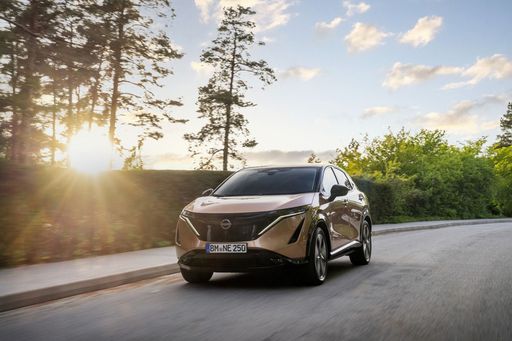 @ Nissan Motor Corporation
@ Nissan Motor Corporation
Nissan Ariya
Alfa Romeo Junior
The Alfa Romeo Junior captures the essence of Italian design with its sleek lines and compact dimensions, making it an icon of elegance and performance. With a spirited driving experience and a charming retro aesthetic, it appeals to enthusiasts and casual drivers alike. This delightful car embodies the brand's rich heritage while remaining a fun and engaging option for those seeking a unique automotive experience.
details @ Alfa Romeo / Stellantis Media
@ Alfa Romeo / Stellantis Media
 @ Alfa Romeo / Stellantis Media
@ Alfa Romeo / Stellantis Media
 @ Alfa Romeo / Stellantis Media
@ Alfa Romeo / Stellantis Media
Nissan Ariya
The Nissan Ariya elevates the electric vehicle segment with its sleek design and advanced technology, providing a modern driving experience. Seamlessly blending comfort with performance, the Ariya offers an inviting and spacious interior that caters to both driver and passengers. Its innovative features make it a strong contender in the growing market for eco-friendly yet stylish automobiles.
details @ Nissan Motor Corporation
@ Nissan Motor Corporation
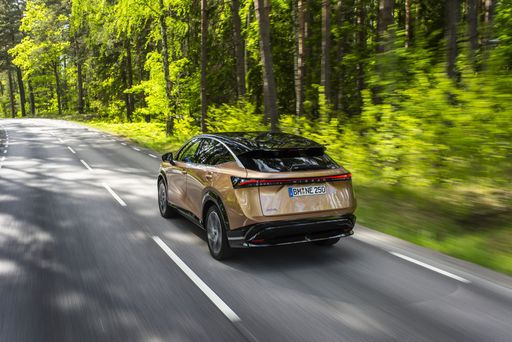 @ Nissan Motor Corporation
@ Nissan Motor Corporation
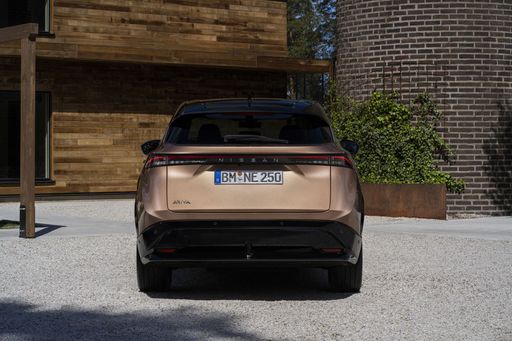 @ Nissan Motor Corporation
@ Nissan Motor Corporation
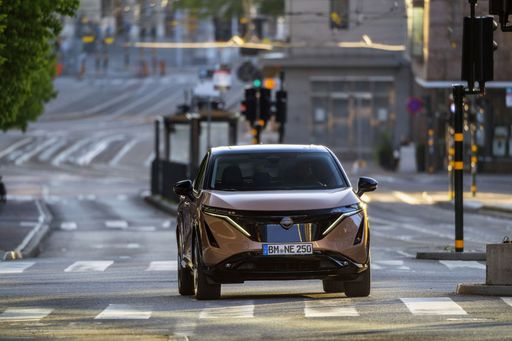 @ Nissan Motor Corporation
@ Nissan Motor Corporation
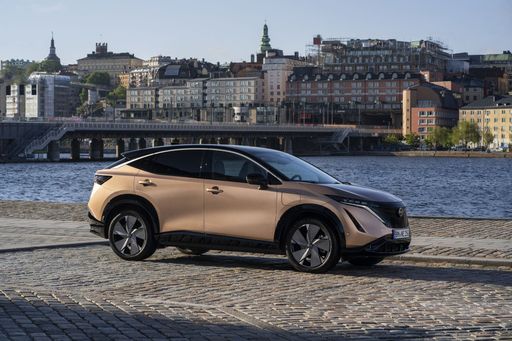 @ Nissan Motor Corporation
@ Nissan Motor Corporation
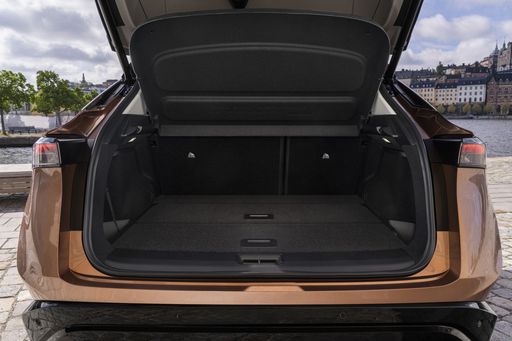 @ Nissan Motor Corporation
@ Nissan Motor Corporation
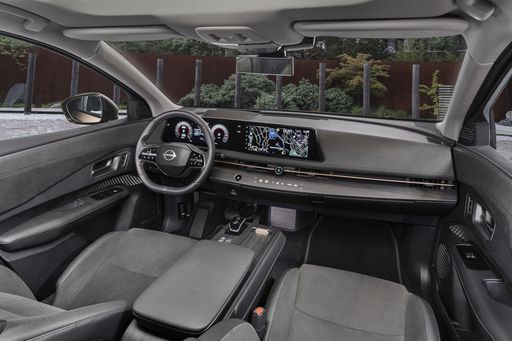 @ Nissan Motor Corporation
@ Nissan Motor Corporation
 @ Alfa Romeo / Stellantis Media
@ Alfa Romeo / Stellantis Media
|
 @ Nissan Motor Corporation
@ Nissan Motor Corporation
|
|
|
|
Costs and Consumption |
|
|---|---|
|
Price
25700 - 41600 £
|
Price
37300 - 54800 £
|
|
Consumption L/100km
4.8 - 5.4 L
|
Consumption L/100km
-
|
|
Consumption kWh/100km
15.1 - 17.5 kWh
|
Consumption kWh/100km
17.7 - 24.5 kWh
|
|
Electric Range
344 - 410 km
|
Electric Range
402 - 531 km
|
|
Battery Capacity
0.4 - 51 kWh
|
Battery Capacity
63 - 87 kWh
|
|
co2
0 - 119 g/km
|
co2
0 g/km
|
|
Fuel tank capacity
44 - 45 L
|
Fuel tank capacity
-
|
Dimensions and Body |
|
|---|---|
|
Body Type
SUV
|
Body Type
SUV
|
|
Seats
5
|
Seats
5
|
|
Doors
5
|
Doors
5
|
|
Curb weight
1380 - 1689 kg
|
Curb weight
1980 - 2259 kg
|
|
Trunk capacity
340 - 415 L
|
Trunk capacity
415 - 468 L
|
|
Length
4173 mm
|
Length
4595 mm
|
|
Width
1781 mm
|
Width
1850 mm
|
|
Height
1505 - 1538 mm
|
Height
1650 mm
|
|
Max trunk capacity
1205 - 1280 L
|
Max trunk capacity
1280 - 1350 L
|
|
Payload
390 - 420 kg
|
Payload
396 - 420 kg
|
Engine and Performance |
|
|---|---|
|
Engine Type
Electric, Petrol MHEV
|
Engine Type
Electric
|
|
Transmission
Automatic
|
Transmission
Automatic
|
|
Transmission Detail
Dual-Clutch Automatic, Reduction Gearbox
|
Transmission Detail
Reduction Gearbox
|
|
Drive Type
Front-Wheel Drive, All-Wheel Drive
|
Drive Type
Front-Wheel Drive, All-Wheel Drive
|
|
Power HP
136 - 280 HP
|
Power HP
218 - 435 HP
|
|
Acceleration 0-100km/h
5.9 - 9.1 s
|
Acceleration 0-100km/h
5 - 7.6 s
|
|
Max Speed
150 - 206 km/h
|
Max Speed
160 - 200 km/h
|
|
Torque
230 - 345 Nm
|
Torque
300 - 600 Nm
|
|
Number of Cylinders
3
|
Number of Cylinders
-
|
|
Power kW
100 - 207 kW
|
Power kW
160 - 320 kW
|
|
Engine capacity
1199 cm3
|
Engine capacity
-
|
General |
|
|---|---|
|
Model Year
2024 - 2025
|
Model Year
2022 - 2025
|
|
CO2 Efficiency Class
A, C, D
|
CO2 Efficiency Class
A
|
|
Brand
Alfa Romeo
|
Brand
Nissan
|
What drive types are available for the Alfa Romeo Junior?
Available configurations include Front-Wheel Drive or All-Wheel Drive.
The prices and data displayed are estimates based on German list prices and may vary by country. This information is not legally binding.
